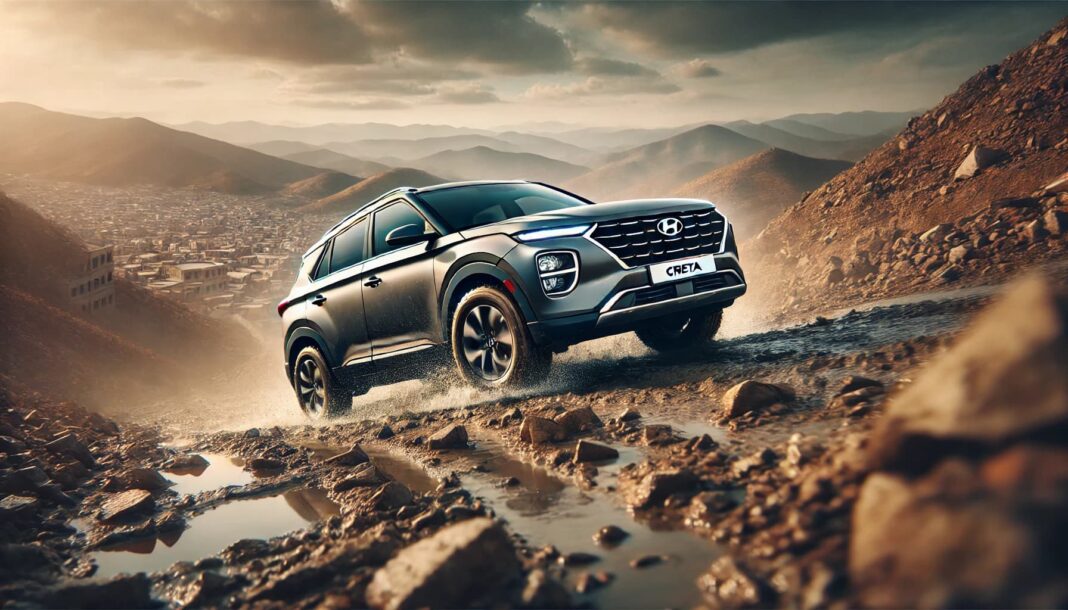When considering a vehicle for purchase, especially in the SUV segment, one important factor that often comes into play is ground clearance. Ground clearance is a key specification, particularly for those who enjoy taking their vehicles on rough terrains or long trips that involve uneven or unpaved roads. The Hyundai Creta, one of the most popular compact SUVs in India, is known for its stylish design, impressive features, and practicality. But how does the Creta ground clearance hold up? In this blog post, we’ll explore the significance of ground clearance, how much clearance the Creta offers, and what it means for your driving experience.
What is Ground Clearance?
Before diving into the specifics of Creta ground clearance, let’s first define what ground clearance actually means. Simply put, ground clearance refers to the distance between the lowest point of a vehicle’s chassis (often the underbody) and the ground. This measurement is crucial because it directly impacts the vehicle’s ability to navigate over obstacles such as speed bumps, curbs, rocks, or other road irregularities.
A higher ground clearance allows a vehicle to handle rough terrains more effectively, without the risk of scraping the underbody. This is particularly important for SUVs and off-road vehicles that are expected to go beyond smooth tarmac and into more challenging environments.
Hyundai Creta Ground Clearance: A Closer Look
The Hyundai Creta, known for its compact and stylish exterior, offers a ground clearance of 190 mm (approximately 7.5 inches). This measurement is fairly impressive for a compact SUV and places it in a good position when compared to other vehicles in its segment. The Creta ground clearance is ideal for both city driving and handling slightly rougher terrains like gravel roads, potholes, and speed bumps.
Is 190 mm Enough?
For most city dwellers, the Creta’s ground clearance of 190 mm will be more than enough to handle common road conditions. In urban environments, where road conditions are usually better, this ground clearance provides a smooth ride and ensures that the vehicle’s underbody is protected from obstacles like potholes and road debris.
However, for individuals who plan to take their Creta on more adventurous or off-road trips, the 190 mm clearance may not be sufficient for serious off-roading. For instance, if you frequently drive over rocky trails or unpaved roads, you might face some limitations in terms of ground clearance, especially when dealing with uneven surfaces or steep inclines.
How Does Creta’s Ground Clearance Compare to Competitors?
To understand how the Creta ground clearance stands up against competitors, let’s compare it with a few popular models in the same SUV segment.
- Kia Seltos – With a ground clearance of 190 mm, the Kia Seltos is almost identical to the Creta, as both vehicles share the same platform. This means that their off-road capabilities are very similar.
- Tata Nexon – The Tata Nexon offers a slightly higher ground clearance of 209 mm. This makes the Nexon more suited for rough roads and challenging terrains compared to the Creta.
- Maruti Suzuki Vitara Brezza – The Vitara Brezza offers a ground clearance of 198 mm, making it slightly higher than the Creta but still not as high as the Nexon.
From this comparison, it’s clear that the Hyundai Creta provides competitive ground clearance in its segment, striking a balance between city driving comfort and the ability to handle moderate off-road conditions.
Benefits of the Creta’s Ground Clearance
The 190 mm ground clearance on the Hyundai Creta comes with several benefits that enhance the overall driving experience:
1. Improved Ride Comfort
A decent ground clearance ensures that the vehicle can glide over road bumps and potholes without discomfort. The Creta’s ground clearance helps reduce the impact of bumps on passengers, ensuring a smoother and more enjoyable ride, particularly on Indian roads where road quality can be inconsistent.
2. Better Off-Road Capabilities
While the Creta’s 190 mm clearance isn’t designed for hardcore off-roading, it’s more than sufficient for moderate off-road situations, like taking on dirt roads or short, rocky paths. If you’re someone who enjoys weekend trips to the hills or driving through rugged areas occasionally, the Creta offers enough clearance for these activities.
3. Aesthetic Appeal
A slightly higher ground clearance also gives the vehicle a commanding presence on the road. The higher stance of the Creta adds to its SUV-like appeal, giving it a rugged, muscular look while still maintaining its compact nature for easy city maneuverability.
Limitations of the Creta’s Ground Clearance
While the 190 mm clearance is generally adequate for most urban and moderate off-road conditions, it does have its limitations:
1. Struggles with Steep Off-Roading
If you’re planning to regularly take your Creta over steep, rocky, or challenging off-road trails, you may run into clearance issues. The underbody may scrape when navigating steep inclines, uneven terrain, or obstacles that require higher clearance.
2. Not Ideal for Heavy Loads
The Creta ground clearance can also be impacted by heavy loads. When the car is loaded with passengers or luggage, the clearance may reduce slightly, making it more vulnerable to scraping the underbody if driving over bumpy or uneven surfaces.
Conclusion
The Creta ground clearance of 190 mm is a solid choice for most urban and suburban drivers. It provides the necessary clearance to handle common road hazards like potholes and speed bumps while giving the vehicle a commanding road presence. For moderate off-roading, it holds up well, but for serious off-road adventures or extremely challenging terrains, you may want to consider a vehicle with a higher clearance.
Overall, the Hyundai Creta remains a versatile and practical choice for those looking for a reliable, stylish, and capable compact SUV. Whether you’re driving in the city or hitting a gravel road on your next weekend getaway, the Creta ground clearance strikes the right balance for a comfortable and confident driving experience.



